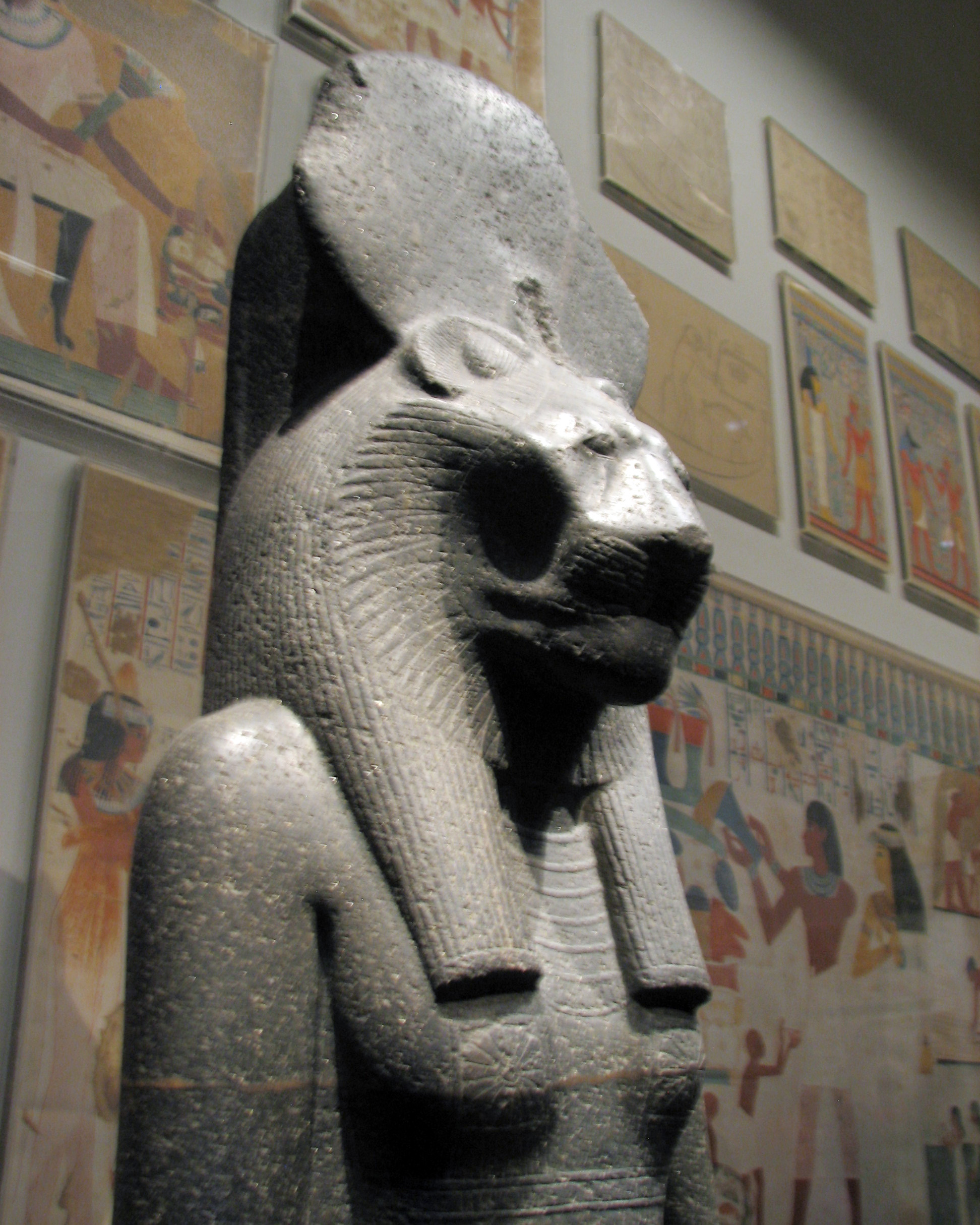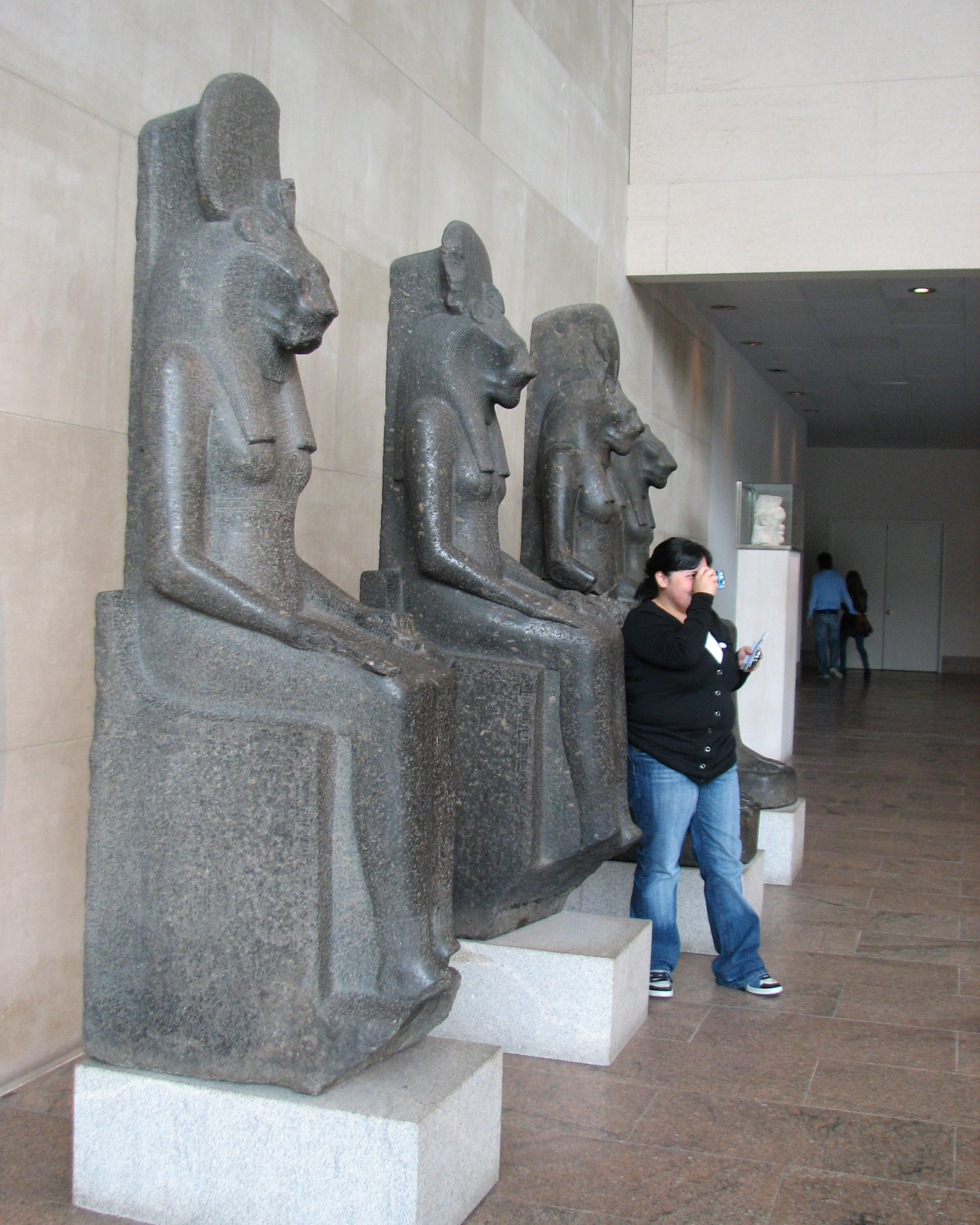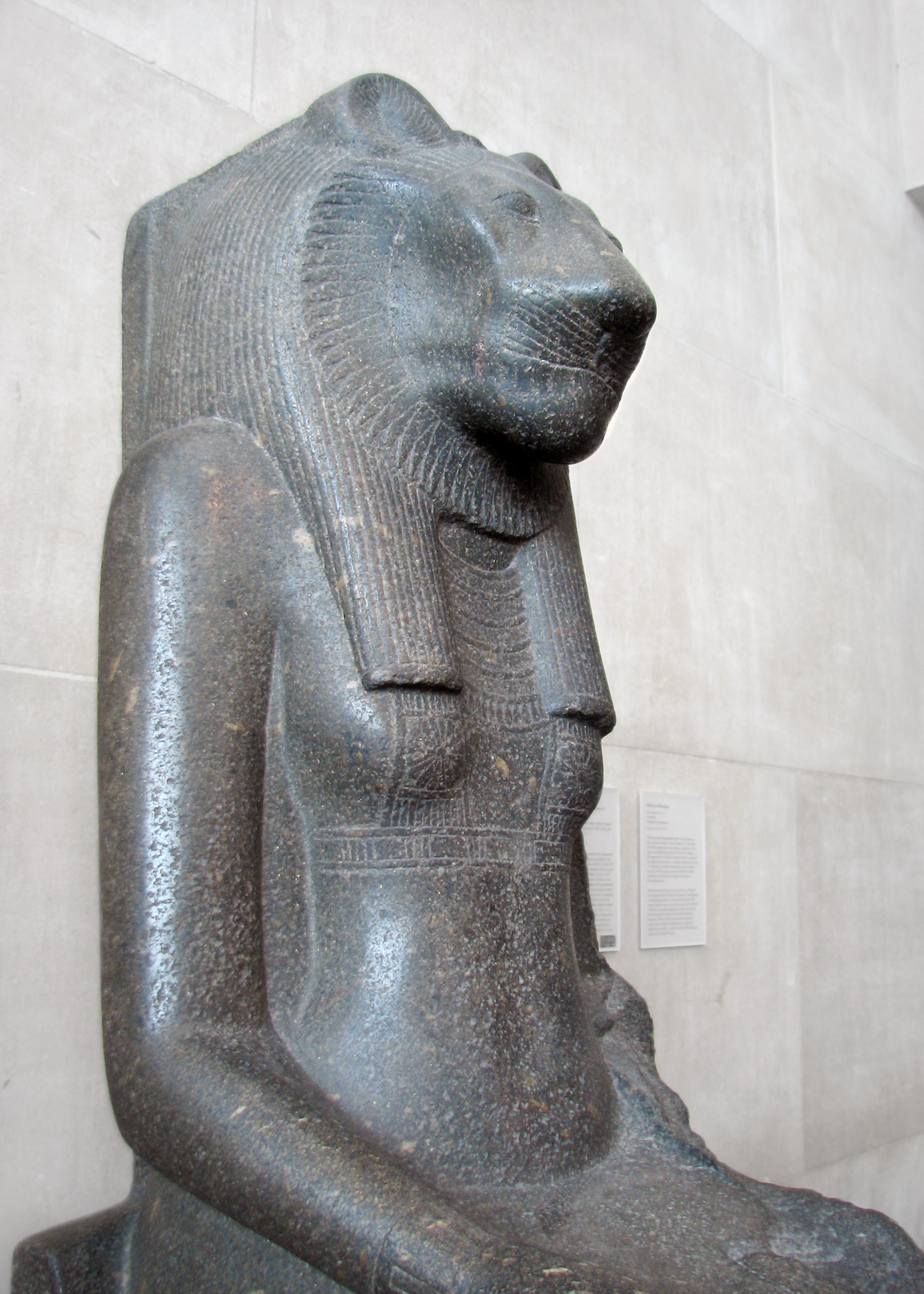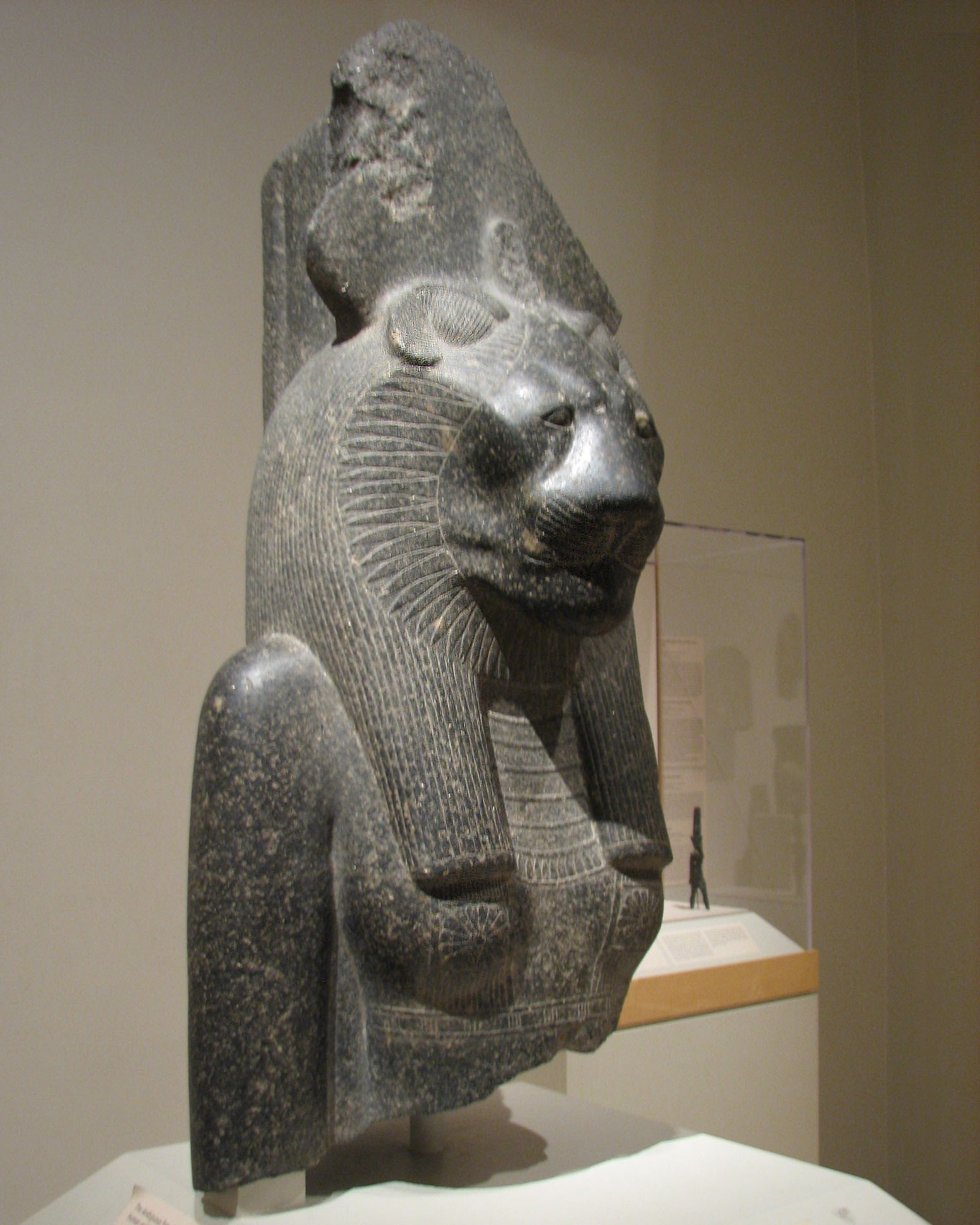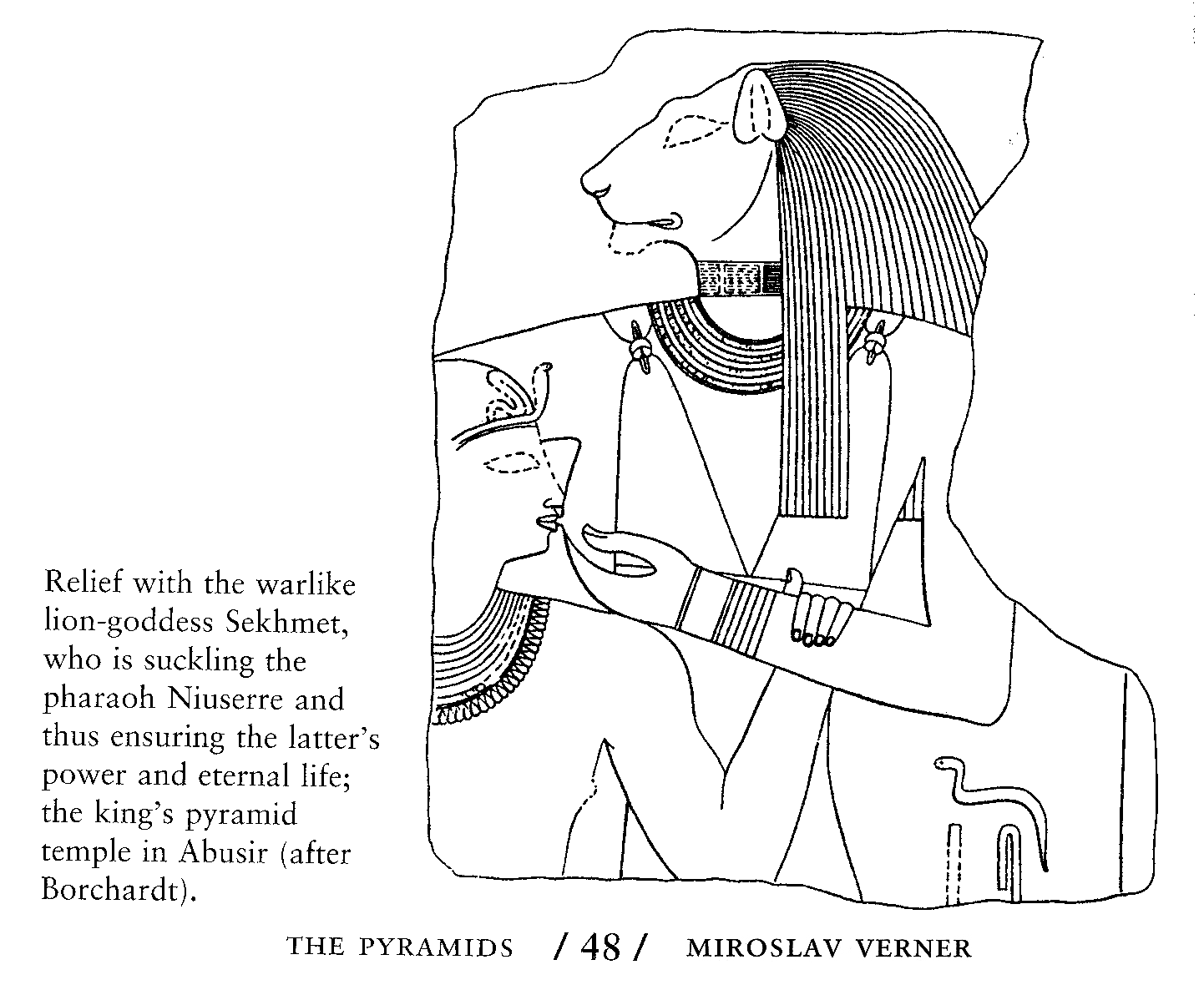
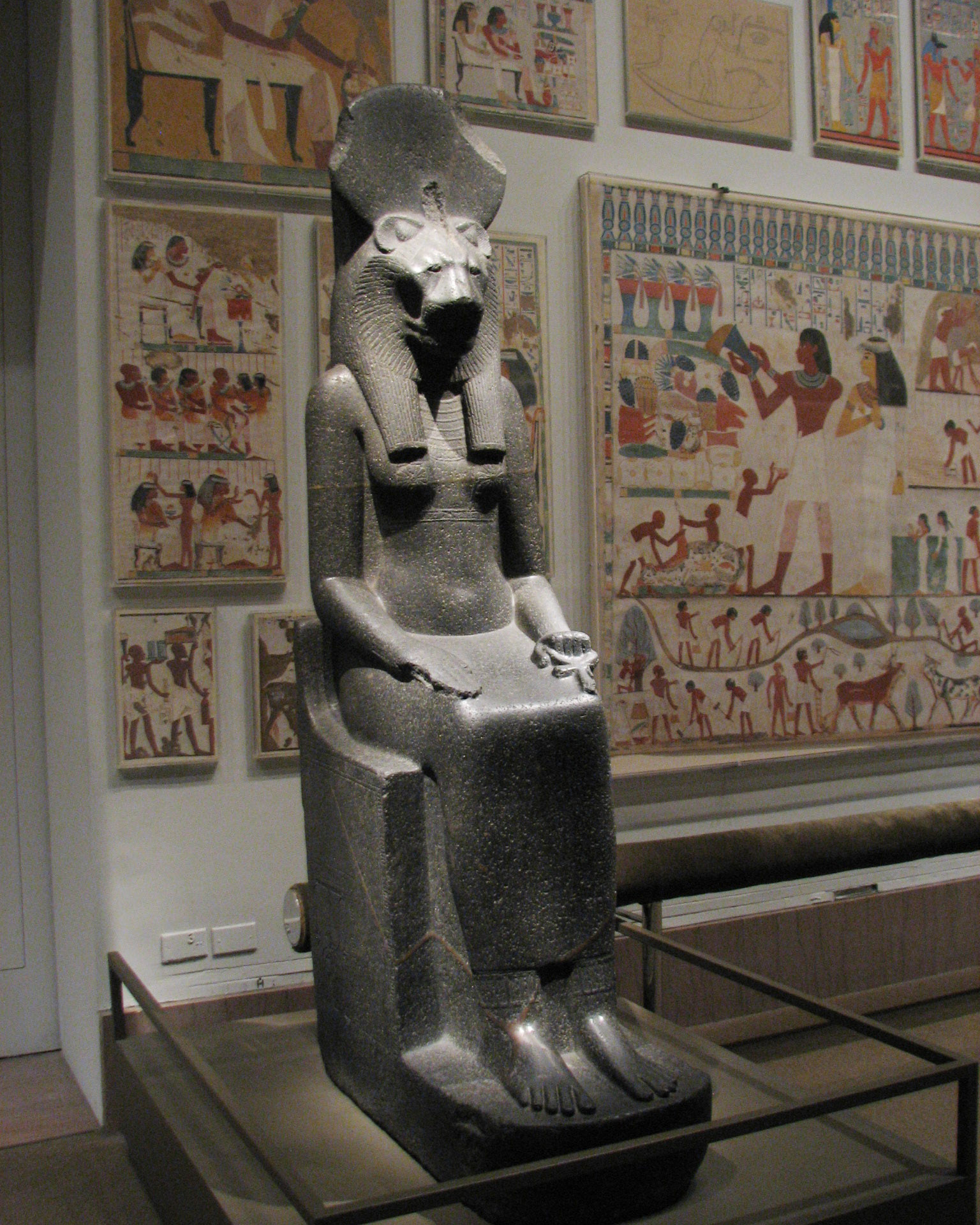
Two Sekhmets
Granodiorite, New Kingdom XVIII, reign of Amunhotep III (circa 1390-1352 B.C) (photos JAL 2009)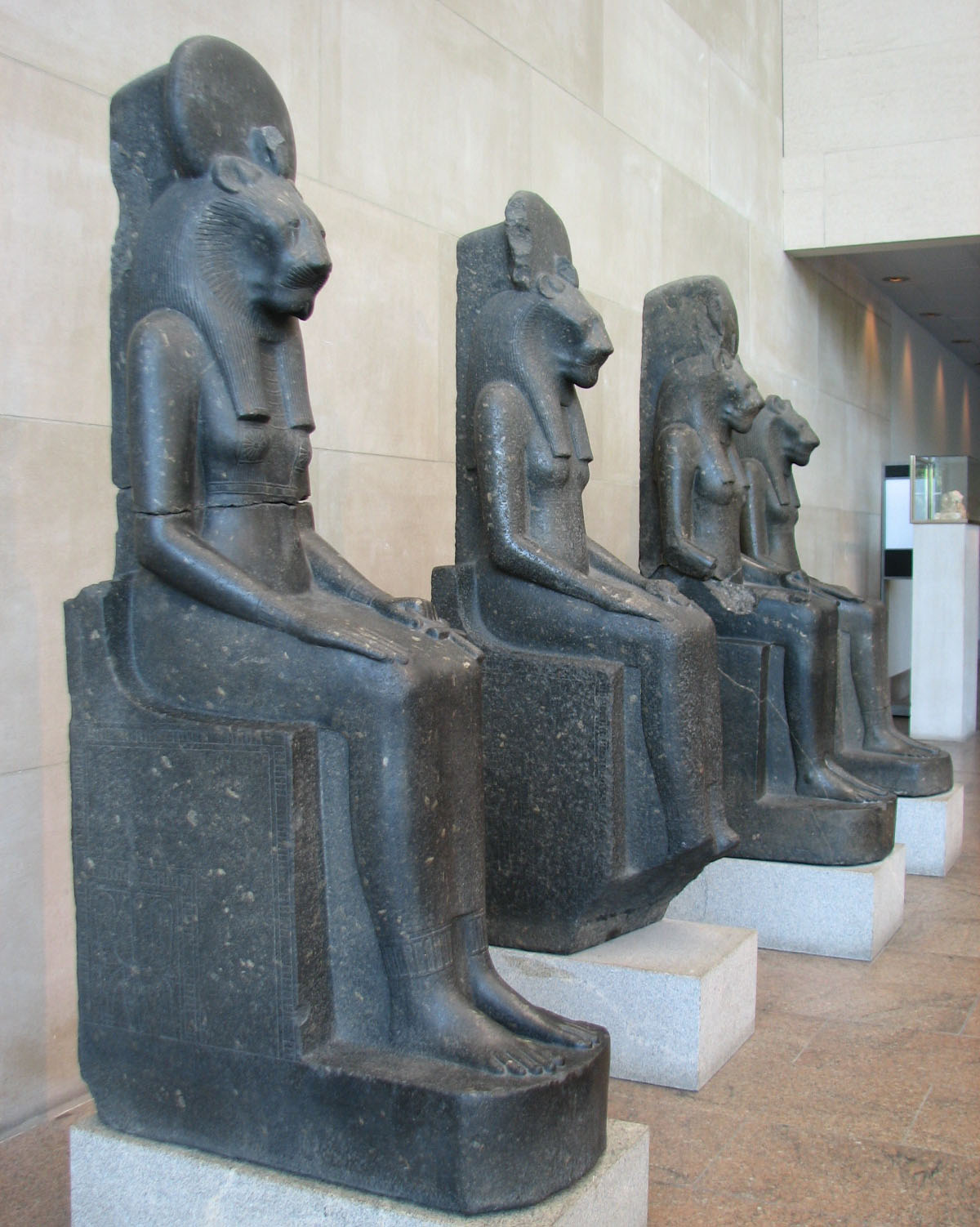
Four Sekhmets in Dendera temple area - 2008, the forward one has been moved to the hallway with paintings of tomb paintings (See above.)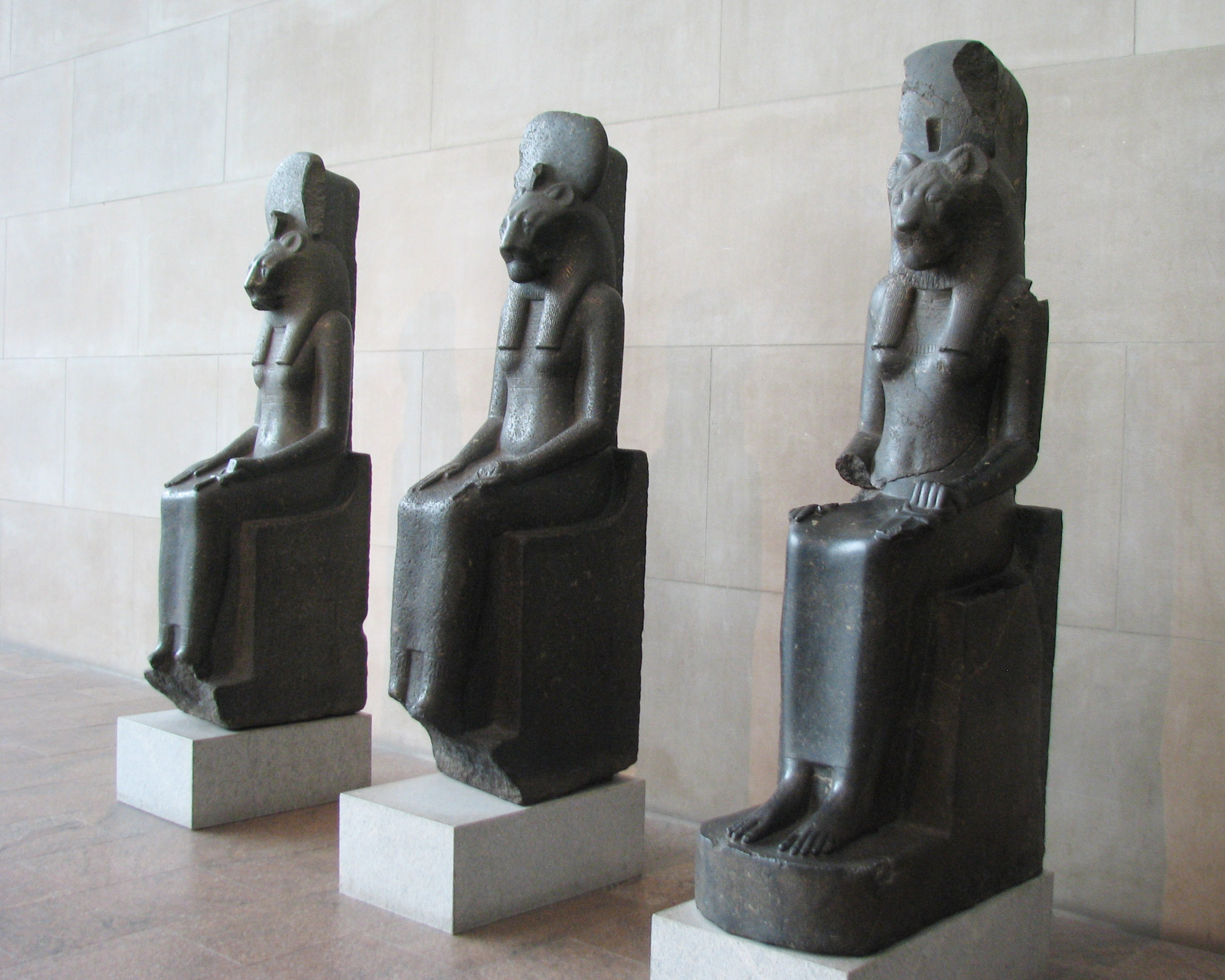
2009 view, the one on the far right wasn't included in this photo...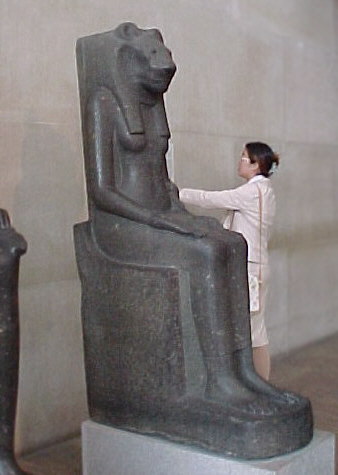
2005 photo (I think this is the one on far right...)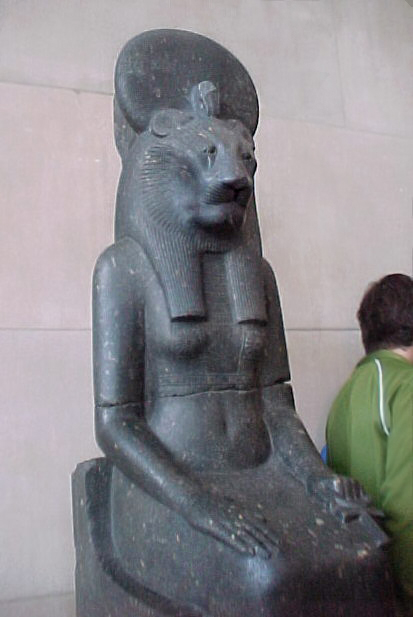
View in 2005 of this Sekhmet, note the stone striation looks like a tear from her eye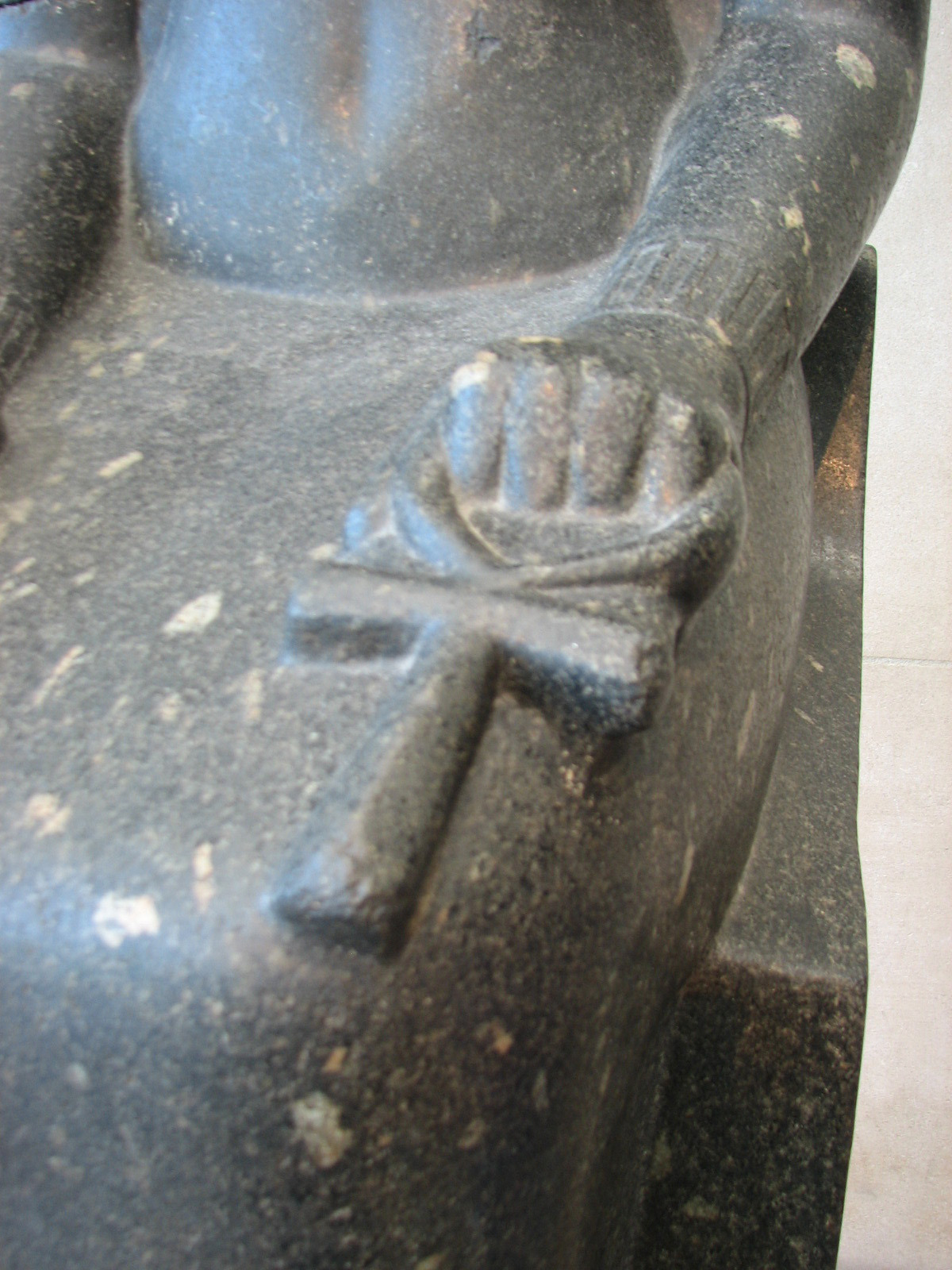
Detail view in 2008 of this Sekhmet
|
(from the info card) "The goddess Sakhmet, whose name means 'The Powerful One,' was worshipped at least as early as the Old Kingdom. In the New Kingdom she became the wife of Ptah, chief god of the Lower Egyptian capital of Memphis. She also became closely associated with Mut, wife of Amun, king of the gods at the Upper Egyptian capital of Thebes. Together these goddesses could represent the unity of Upper and Lower Egypt, conceived of as a duality." |
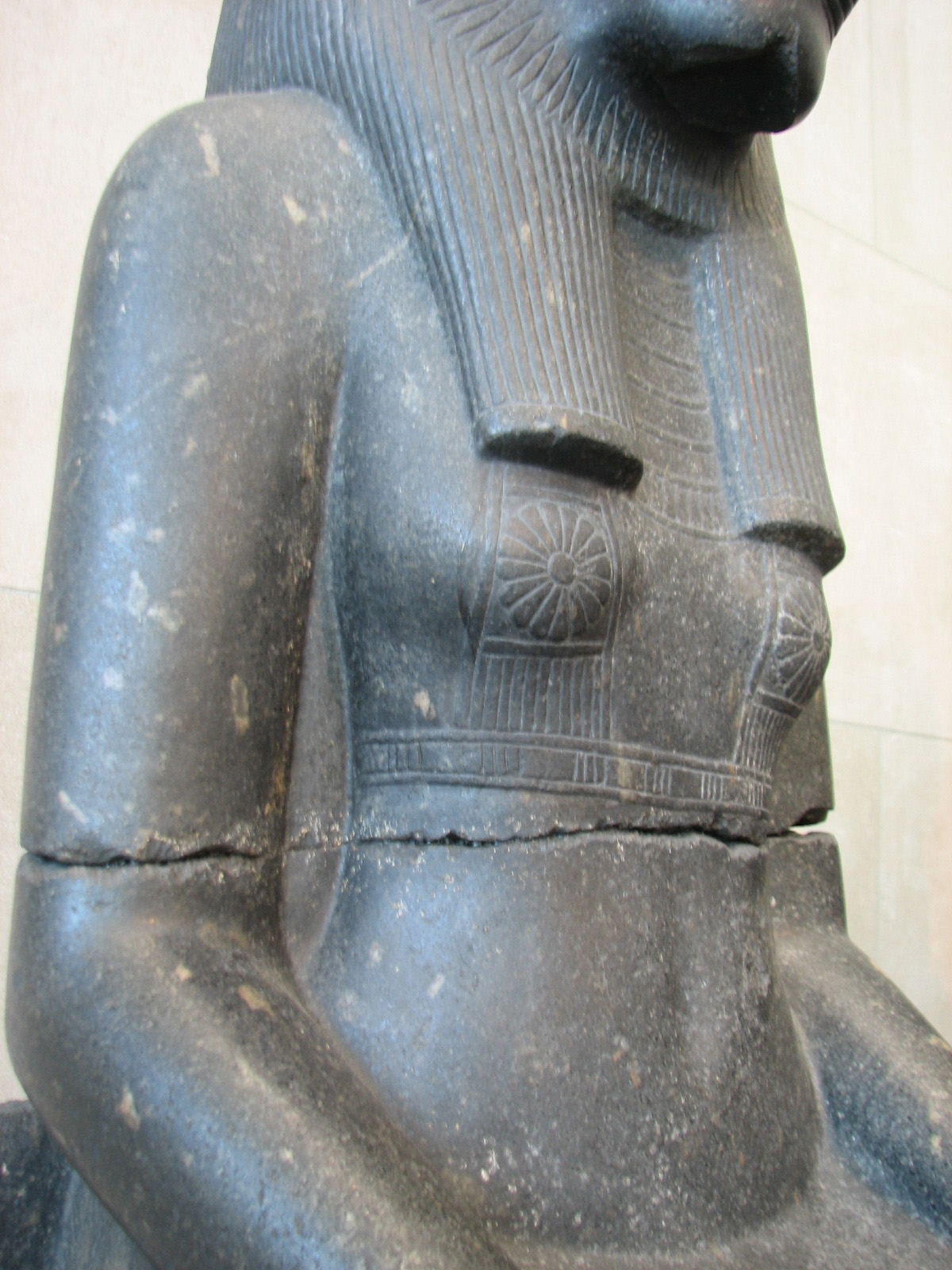
Notice the rosetta pattern over each nipple, an ancient leonine motif that can be traced to observation of the shoulder-knot hairs on lions. (2008 photo)
